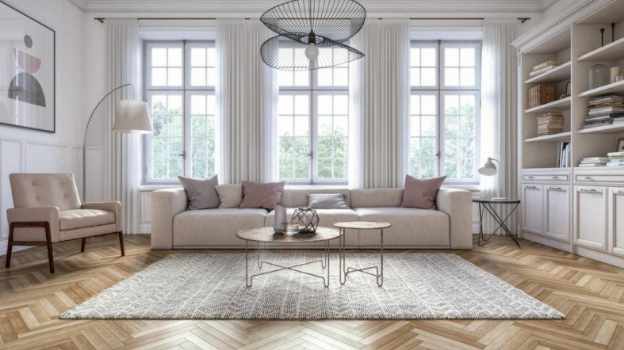As the real estate market evolves, so do the tools that professionals use to present properties in the best possible light. One such innovative tool is virtual staging, a technology-driven solution that has revolutionized the way properties are marketed to potential buyers. So how does it work? This article delves into how virtual staging in real estate works, its benefits, and why it has become an essential part of selling homes today.

What is Virtual Staging?
Real estate experts understand the importance of staging a home for sale. It’s critical if you want to get elevated offers quickly. But how do you stage a home that’s practically empty? That’s where virtual staging comes in. It is the process of using digital technology to furnish and decorate a property to enhance its appeal in marketing materials.
Unlike traditional staging, which requires physical furniture and decorations, virtual staging is completed entirely on a computer. This method allows real estate agents and homeowners to present an attractive, furnished interior through photos, even if the actual space is empty.
Benefits of Virtual Staging
- Cost-Effective: Traditional staging can be expensive, requiring the rental, transport, and arrangement of physical items. Virtual staging eliminates these costs, offering a budget-friendly alternative that still delivers visually appealing results.
- Quick and Convenient: Without the need for physical furniture, virtual staging can be completed much faster than traditional staging. High-quality images can be produced in just a few days, accelerating the marketing process and allowing listings to go live quickly.
- Customizable: Virtual staging software provides the flexibility to experiment with different styles and arrangements, making it easier to appeal to a broad audience or target a specific demographic. This adaptability is a significant advantage when trying to attract buyers with diverse tastes.
- Increases Property Appeal: By furnishing an empty space digitally, virtual staging helps potential buyers visualize themselves living in the home. It can transform a bare, impersonal space into a warm and inviting home, potentially increasing buyer interest and the perceived value of the property.
- Ideal for Online Listings: Since most property searches begin online, having attractively staged photos can make a significant impact on a listing’s performance. Virtual staging ensures that the first impression made through online photos is both striking and memorable.
How Virtual Staging in Real Estate Works
The process of virtual staging involves several key steps:
- Photography: It starts with taking professional photographs of the empty property. These images serve as the base for the digital staging process.
- Digital Furnishing: Using specialized software, designers add furniture, fixtures, and décor to the photographs. This step is where the creativity shines, as the spaces are tailored to look appealing and realistic.
- Revisions and Finalization: The initial drafts of the staged photos are reviewed, and any necessary adjustments are made. This iterative process ensures that the final images perfectly match what the real estate agent or homeowner wants.
- Utilization: The completed images are then used in various marketing channels such as online real estate listings, social media, and printed brochures.
Applications of Virtual Staging
While virtual staging is predominantly used in residential real estate, its applications are varied:
- Commercial Real Estate: Businesses can use virtual staging to design office spaces, retail locations, and more, showing potential renters or buyers the possibilities of a commercial property.
- Renovations and Developments: For properties under construction or renovation, virtual staging can offer a preview of the finished space, helping to secure pre-sales or rentals.
- Interior Design: Homeowners considering a redesign can use virtual staging to experiment with different looks before making any physical changes.
Choosing the right virtual staging service is crucial to ensure that the digitally staged images are high quality and effective in attracting potential buyers. Services vary in terms of cost, style options, and turnaround time, so it’s important to select one that aligns with your specific needs.
For those looking to explore more about how virtual staging could benefit their real estate endeavors, detailed information can be found through resources like virtual staging.
In conclusion, virtual staging in real estate represents a significant advancement in marketing vacant properties. By combining cost-efficiency, convenience, and visual appeal, it provides an essential tool for modern real estate professionals, helping to transform how properties are presented and sold in today’s digital age.


